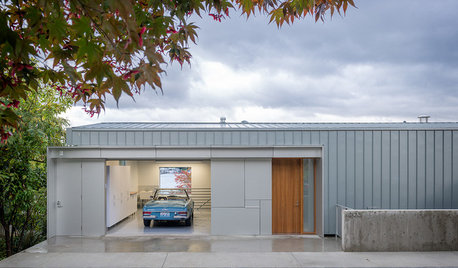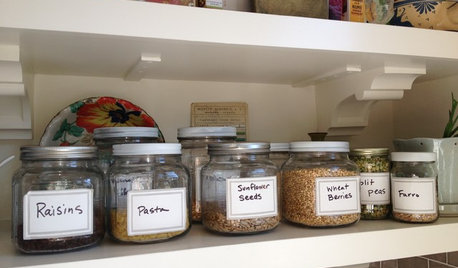Bagging question
yotetrapper
15 years ago
Related Stories

KITCHEN DESIGN9 Questions to Ask When Planning a Kitchen Pantry
Avoid blunders and get the storage space and layout you need by asking these questions before you begin
Full Story
ORGANIZINGPre-Storage Checklist: 10 Questions to Ask Yourself Before You Store
Wait, stop. Do you really need to keep that item you’re about to put into storage?
Full Story
REMODELING GUIDESConsidering a Fixer-Upper? 15 Questions to Ask First
Learn about the hidden costs and treasures of older homes to avoid budget surprises and accidentally tossing valuable features
Full Story
WORKING WITH PROS12 Questions Your Interior Designer Should Ask You
The best decorators aren’t dictators — and they’re not mind readers either. To understand your tastes, they need this essential info
Full Story
SELLING YOUR HOUSE15 Questions to Ask When Interviewing a Real Estate Agent
Here’s what you should find out before selecting an agent to sell your home
Full Story
MOVINGHiring a Home Inspector? Ask These 10 Questions
How to make sure the pro who performs your home inspection is properly qualified and insured, so you can protect your big investment
Full Story
BATHROOM DESIGNHow to Know if an Open Bathroom Vanity Is for You
Ask yourself these questions to learn whether you’d be happy with a vanity that has open shelves
Full Story
MOST POPULAR10 Reasons to Get Rid of More Clutter
From a calmer mind to a more workable closet, the benefits of streamlining are just a few trash bags away
Full Story
LAUNDRY ROOMSMake a Clean Break With Laundry Chaos
Bins and bags, sorters and other storage — we've got several loads' worth of ways to keep your laundry neat
Full Story
KITCHEN STORAGEArtful Organizers: Jars for Pretty Pantry Displays
Ditch the disheveled look of mismatched boxes and bags for colorful or clear pantry jars in an appealing arrangement
Full Story

digdirt2
yotetrapperOriginal Author
Related Professionals
Foothill Ranch Landscape Architects & Landscape Designers · Severn Landscape Architects & Landscape Designers · Camp Verde Landscape Contractors · Fair Lawn Landscape Contractors · Hoover Landscape Contractors · Maywood Landscape Contractors · Oak Forest Landscape Contractors · Paramus Landscape Contractors · Pomona Landscape Contractors · Salem Landscape Contractors · Secaucus Landscape Contractors · Streamwood Landscape Contractors · Waipahu Landscape Contractors · Webster Groves Landscape Contractors · Bixby Roofing & Guttersdigdirt2
yotetrapperOriginal Author
remy_gw
yotetrapperOriginal Author
remy_gw
spiced_ham
yotetrapperOriginal Author